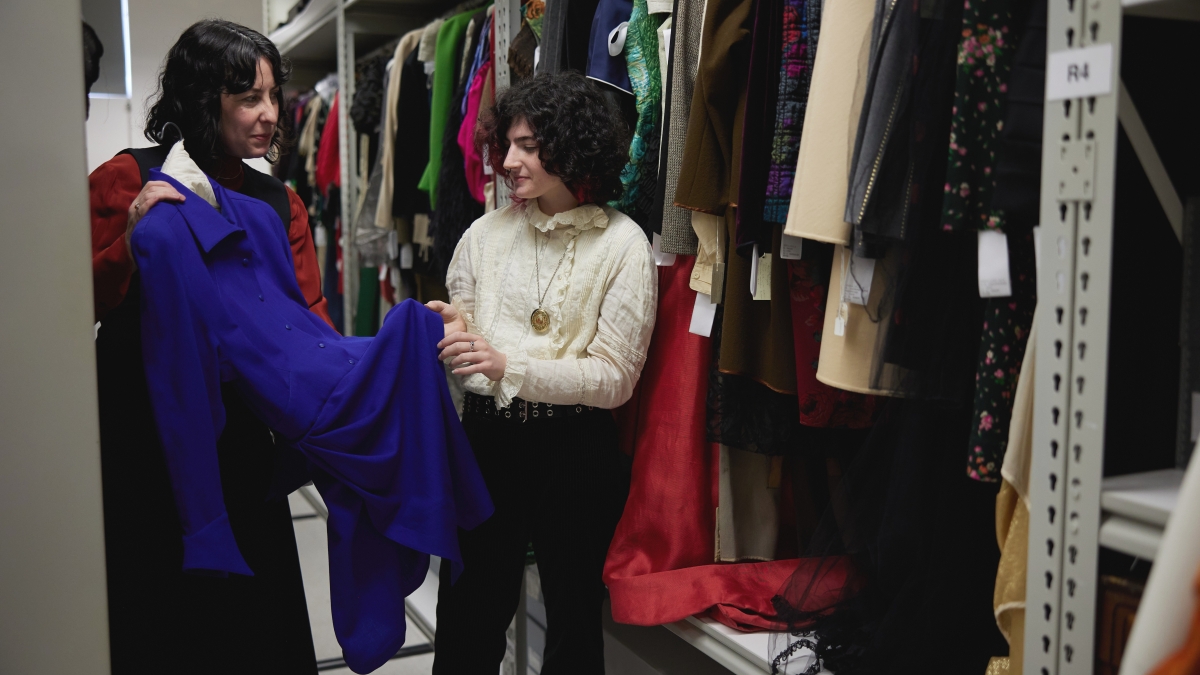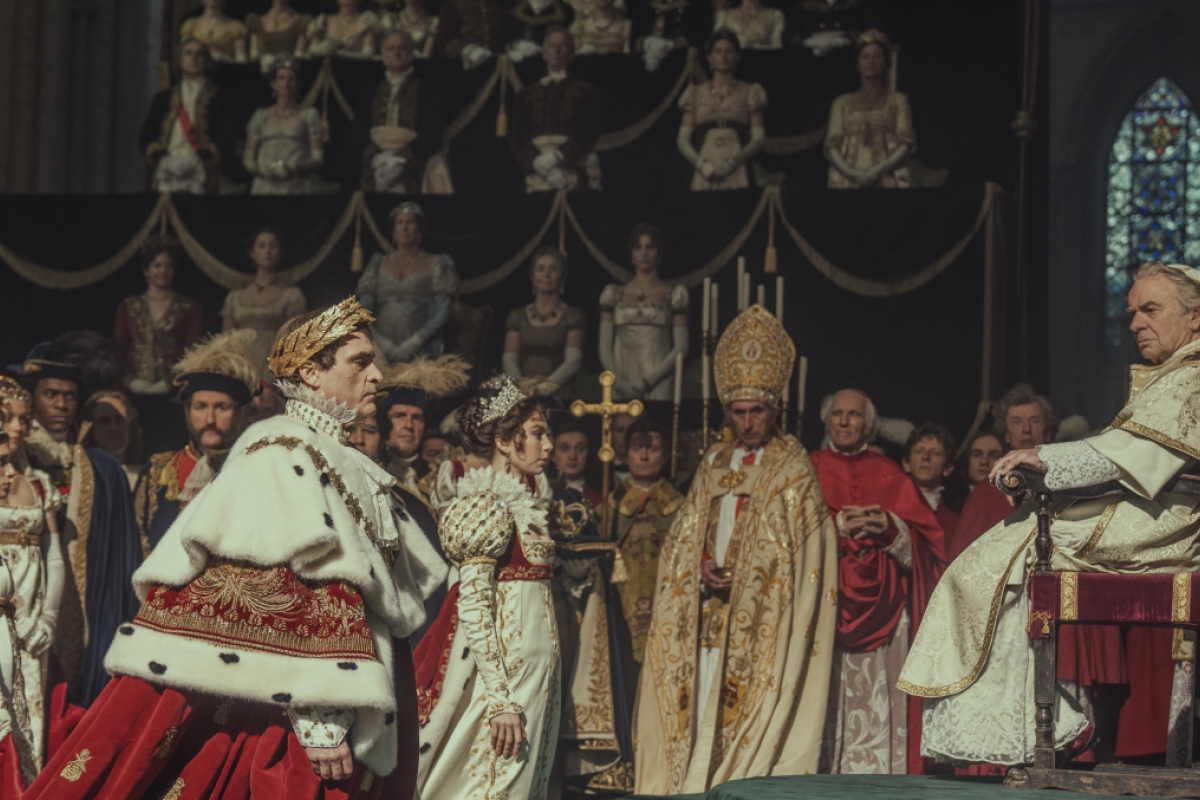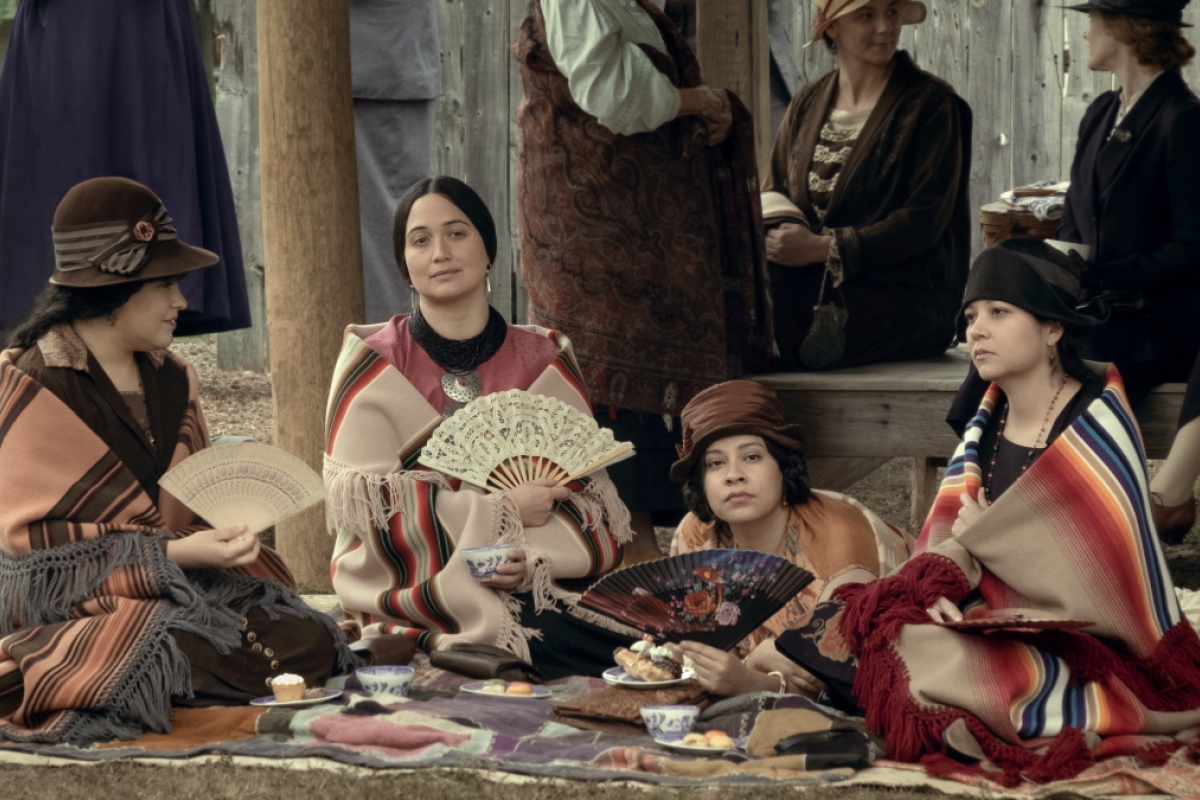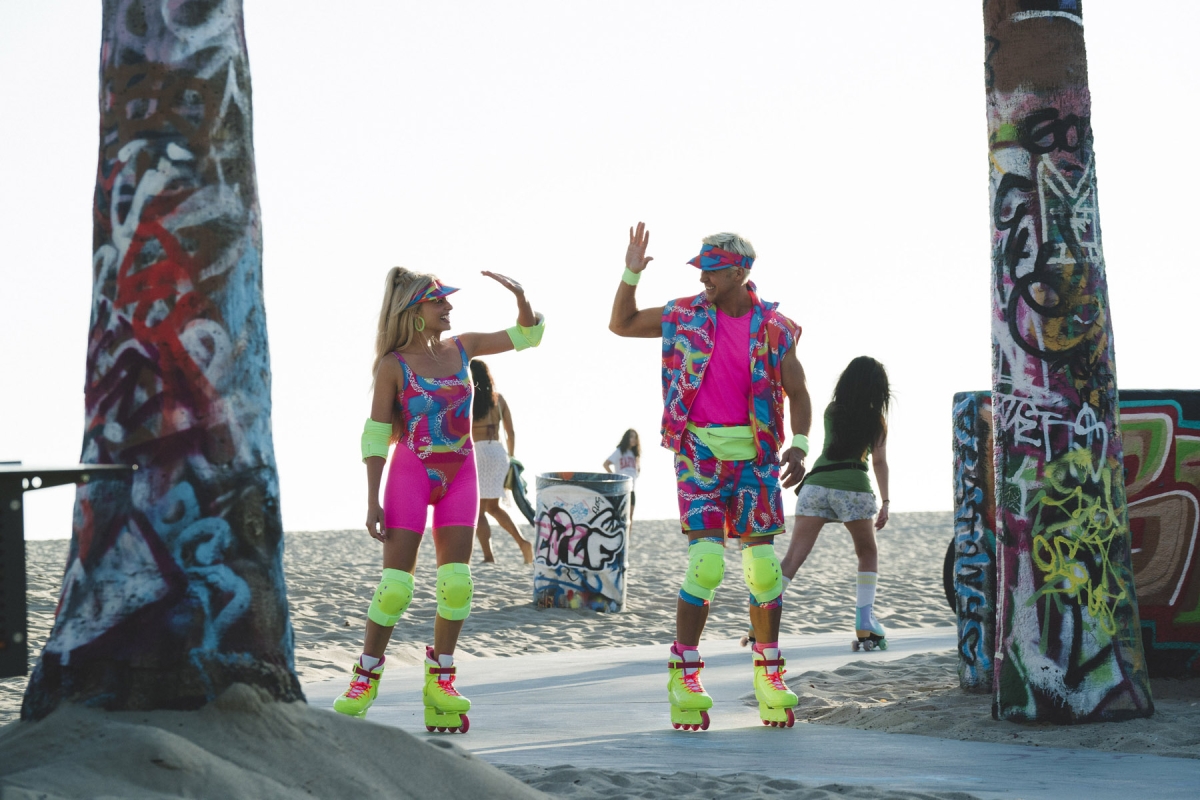ASU FIDM Museum in LA showcases costume designs from 2023’s best movies

Christina Frank (left) shows student Sophia Bonnen a garment from the ASU FIDM Museum Study Collection during a collections appointment. Photo by Derren Versoza
The FIDM Museum in Los Angeles has long been known for its rich collection of fashion objects and special collections artifacts spanning multiple centuries — and for its annual exhibition showcasing the year’s best costume designs for film.
The museum organized the "costume design in film" exhibition to coincide with Oscar season, working closely with film studios to give audiences a chance to see these often iconic looks up close.
Now, as the ASU FIDM Museum, the Los Angeles institution is — in the words of ASU President Michael Crow — “proud to uphold this tradition.”
Event details
“The Art of Costume Design in Film”
March 5–April 20
ASU FIDM Museum
ASU California Center Grand
919 South Grand Avenue
Los Angeles, California, 90015
Free
The 2024 “Art of Costume Design in Film” exhibition opens to the public March 5 and runs through April 20.
The show features costumes from a variety of films released in 2023, including all five Academy Award nominees for costume design: “Barbie,” “Oppenheimer,” “Poor Things,” “Napoleon” and “Killers of the Flower Moon.”
“The ASU FIDM Museum is a tremendous resource both for ASU FIDM students and for the wider fashion and costume design community,” ASU FIDM Director Dennita Sewell said. “We’re excited to continue to build on the storied legacy of FIDM and to celebrate the art of costume design.”
While the works on display in the show come from many different genres, they share a common thread, said ASU FIDM Museum’s Christina Frank, who curated the exhibition. They are shining examples of how designers use their knowledge, craftsmanship and creativity to effectively express character through clothing.
Frank noted that many of the designers in this year’s show, such as Janty Yates and David Crossman from “Napoleon” and Jacqueline West from “Killers of the Flower Moon,” did extensive research to bring authenticity to characters.
For example, West enlisted the expertise of Julie O’Keefe, a tribe member and expert on Osage dress, to ensure that the costumes were accurate representations of Indigenous culture.
In preparation for her work on “Oppenheimer,” Ellen Mirojnick scheduled a research appointment at the ASU FIDM Museum to examine 1940s men’s suits.
Jacqueline Durran, with “Barbie,” studied the Mattel archives to fully understand the wardrobe of a doll with over 60 years of history.
And designer Francine Jamison-Tanchuck revisited Alice Walker’s classic “The Color Purple” years after having worked on the original 1985 feature film. In this iteration, Franks says, Jamison-Tanchuk showcased her expert use of color and texture in a retelling that celebrated moments of Black joy.
In the 1920s and '30s, Hollywood studios enlisted the help of major fashion designers to create glamorous looks for their stars. Today, the fashion industry recognizes that film costume, seen by millions worldwide, has a significant influence on the runway.
Holly Waddington’s imaginative designs for “Poor Things” feature voluminous sleeves that reference 1890s fashion. Designers such as Daniel Roseberry at Schiaparelli, Thom Browne, the Rodarte sisters and Demna at Balenciaga have followed suit, showing dramatic shoulder styles in their collections and solidifying 2023 as the year of the power sleeve.
ASU FIDM students had the opportunity to hear about the designs from Waddington herself during the course of the “Poor Things” exhibition at the ASU FIDM Museum this past November.
“Saltburn,” “Air” and “Priscilla” inspired mood boards everywhere, Frank says. Sophie Canale from “Saltburn” furthered early-aughts fashion trends, while Charlese Antoinette Jones from “Air” captured 1980s style in Portland, Oregon — the birthplace of the ubiquitous Nike Air Jordan.
Stacy Battat showed that fashion can create and manipulate identity in her 1960s- and '70s-era costumes for “Priscilla.”
The collection of more than 50 designs on view at the museum demonstrates the power of film and design to shift the culture in unprecedented ways. Filmmakers, film lovers, designers and fashion aficionados alike will delight in the incredible design, immersive stories, intriguing histories and cutting-edge innovation on display in “The Art of Costume Design in Film.”
The museum has also organized educational programming to complement the exhibition, including live talks and Q&A sessions with renowned costume designers and the opportunity to participate in hands-on workshops exploring various facets of costume design, from historical research to contemporary trends.
More Arts, humanities and education

ASU professor's project helps students learn complex topics
One of Arizona State University’s top professors is using her signature research project to improve how college students learn science, technology, engineering, math and medicine.Micki Chi, who is a…

Award-winning playwright shares her scriptwriting process with ASU students
Actions speak louder than words. That’s why award-winning playwright Y York is workshopping her latest play, "Becoming Awesome," with actors at Arizona State University this week. “I want…

Exceeding great expectations in downtown Mesa
Anyone visiting downtown Mesa over the past couple of years has a lot to rave about: The bevy of restaurants, unique local shops, entertainment venues and inviting spaces that beg for attention from…




